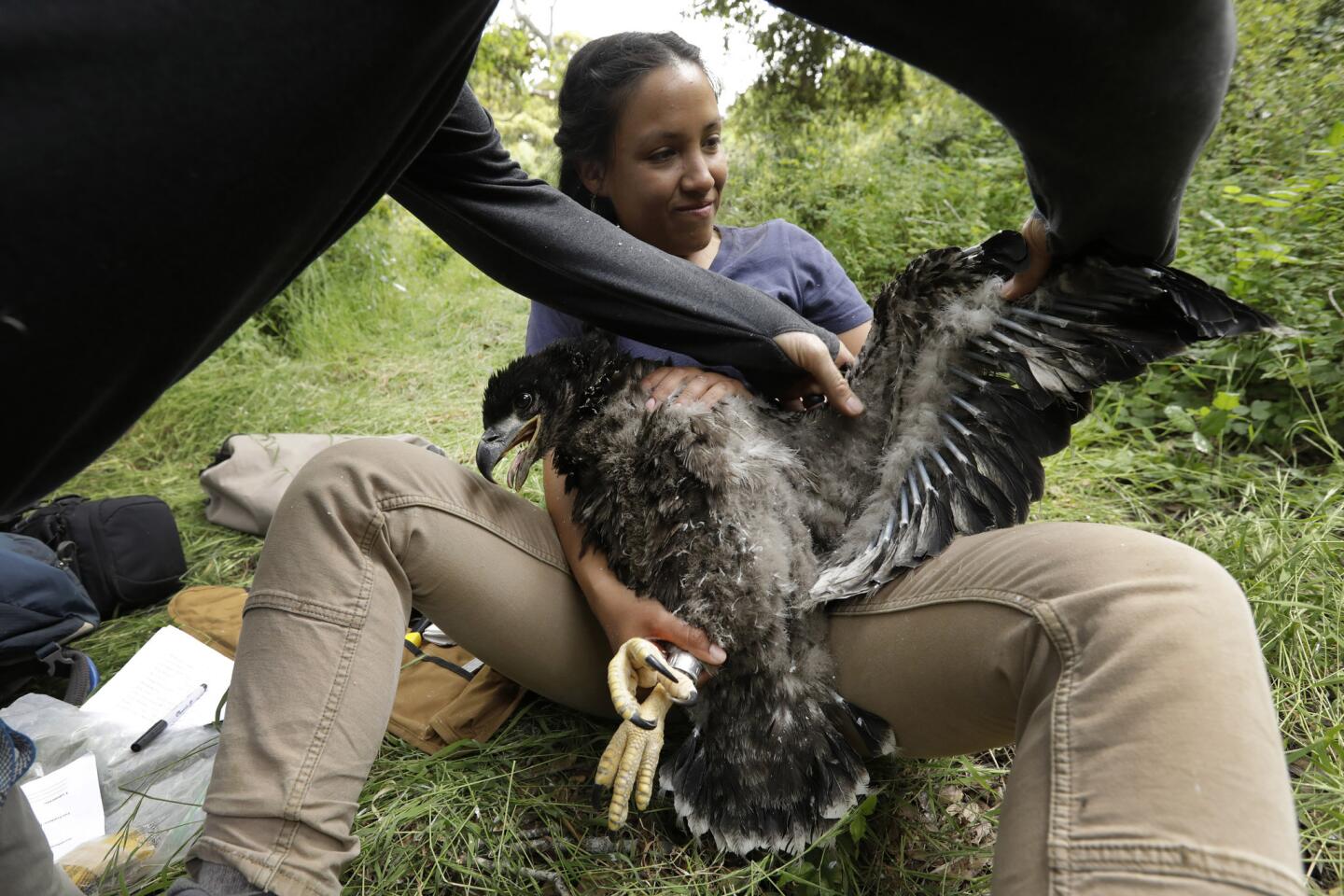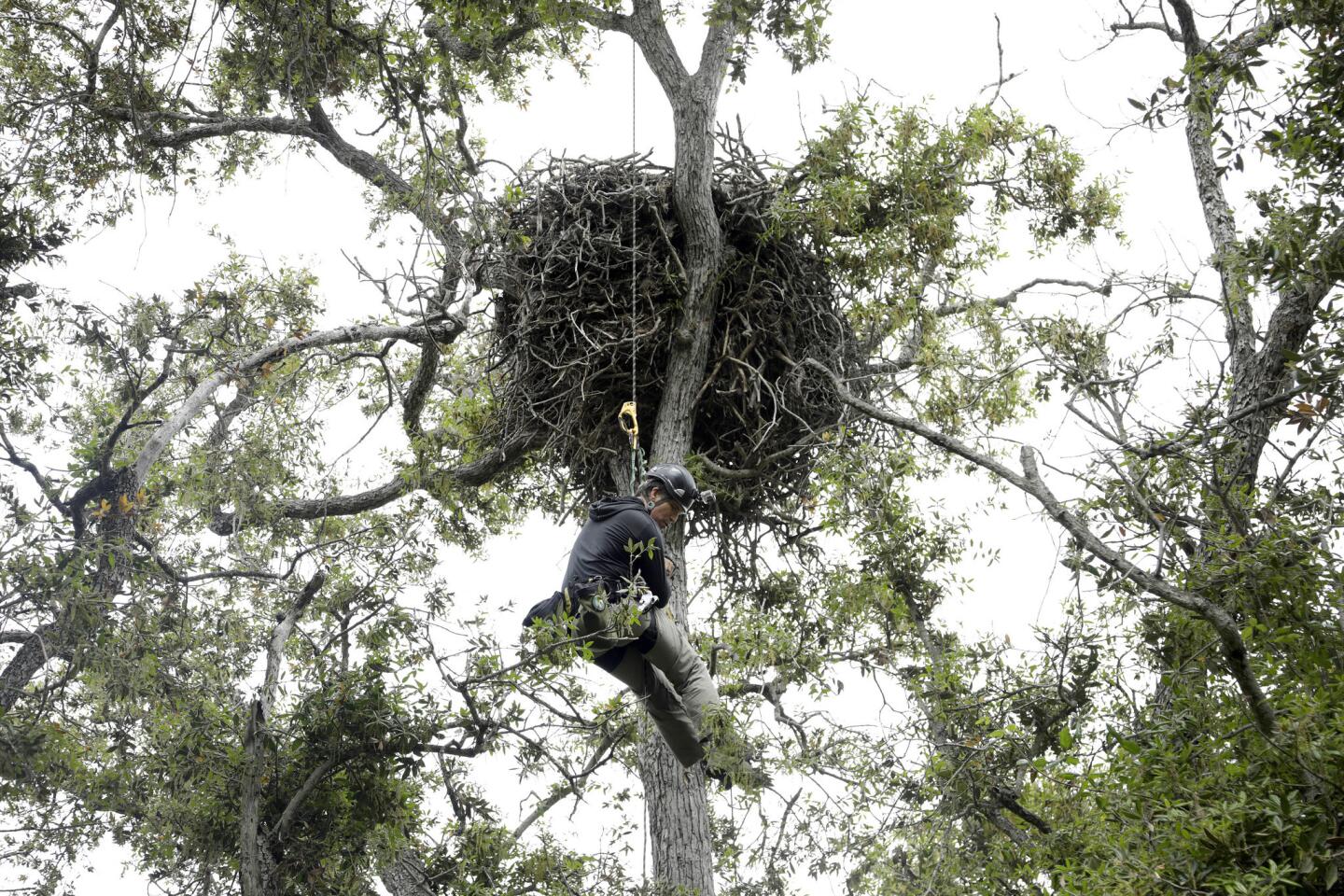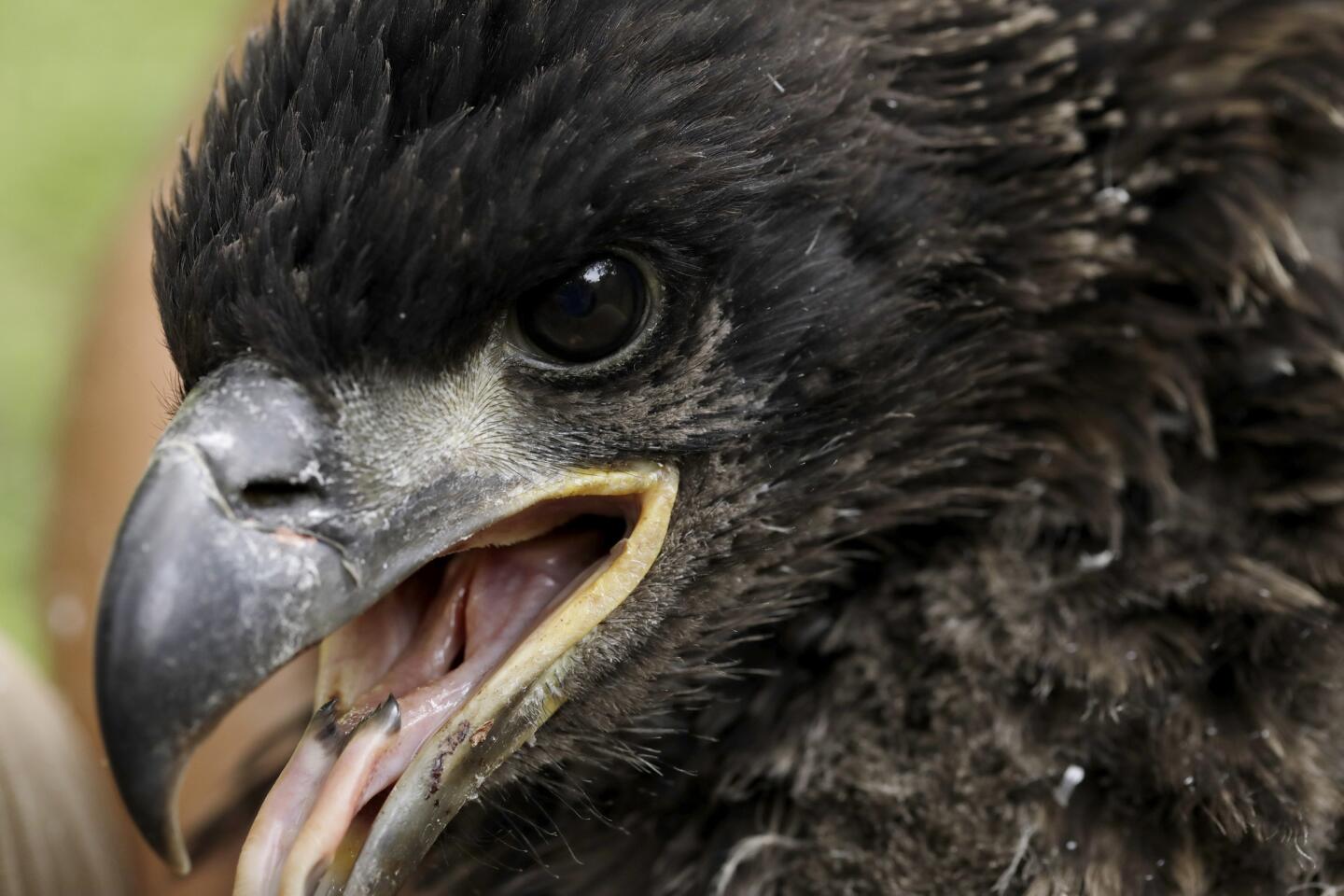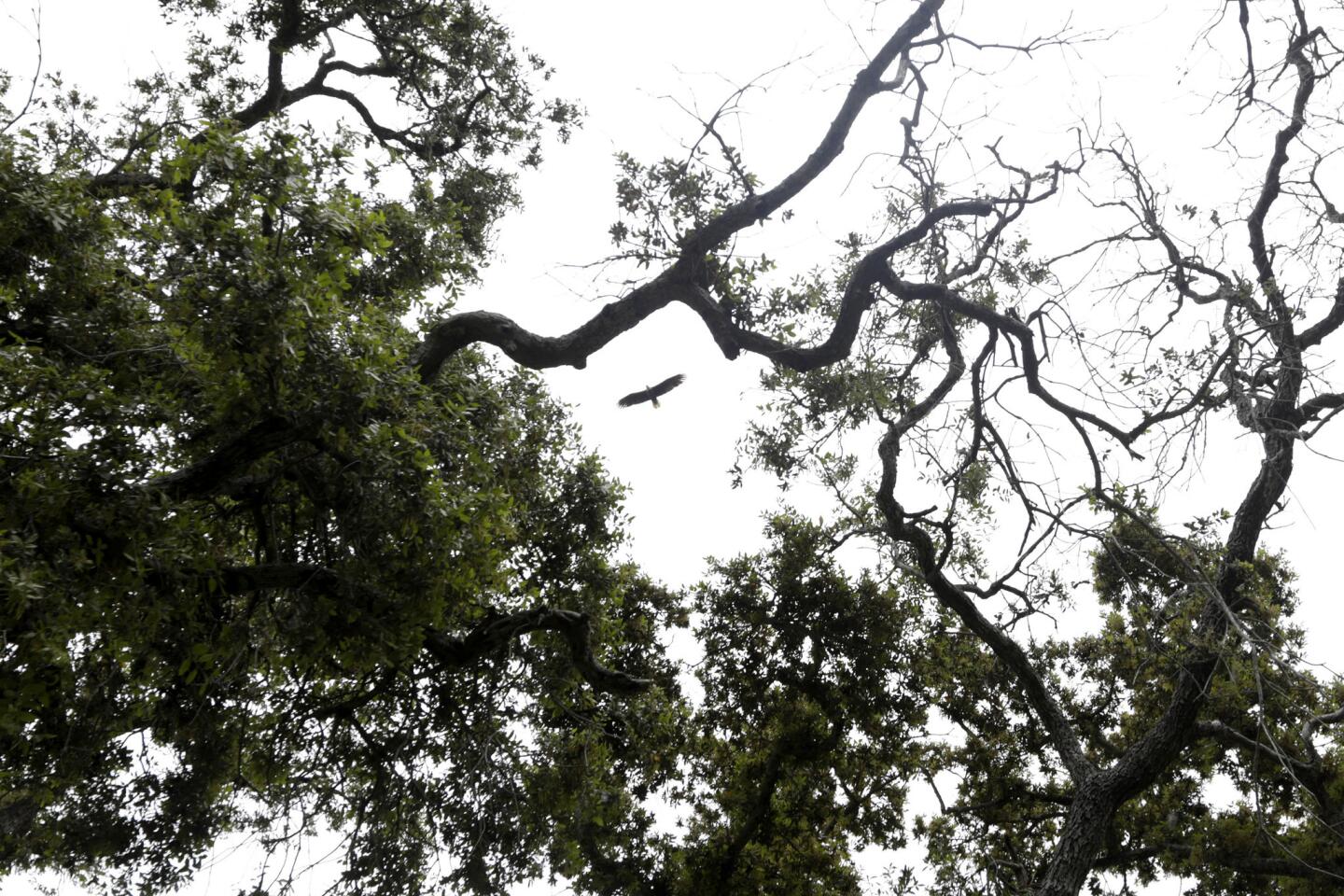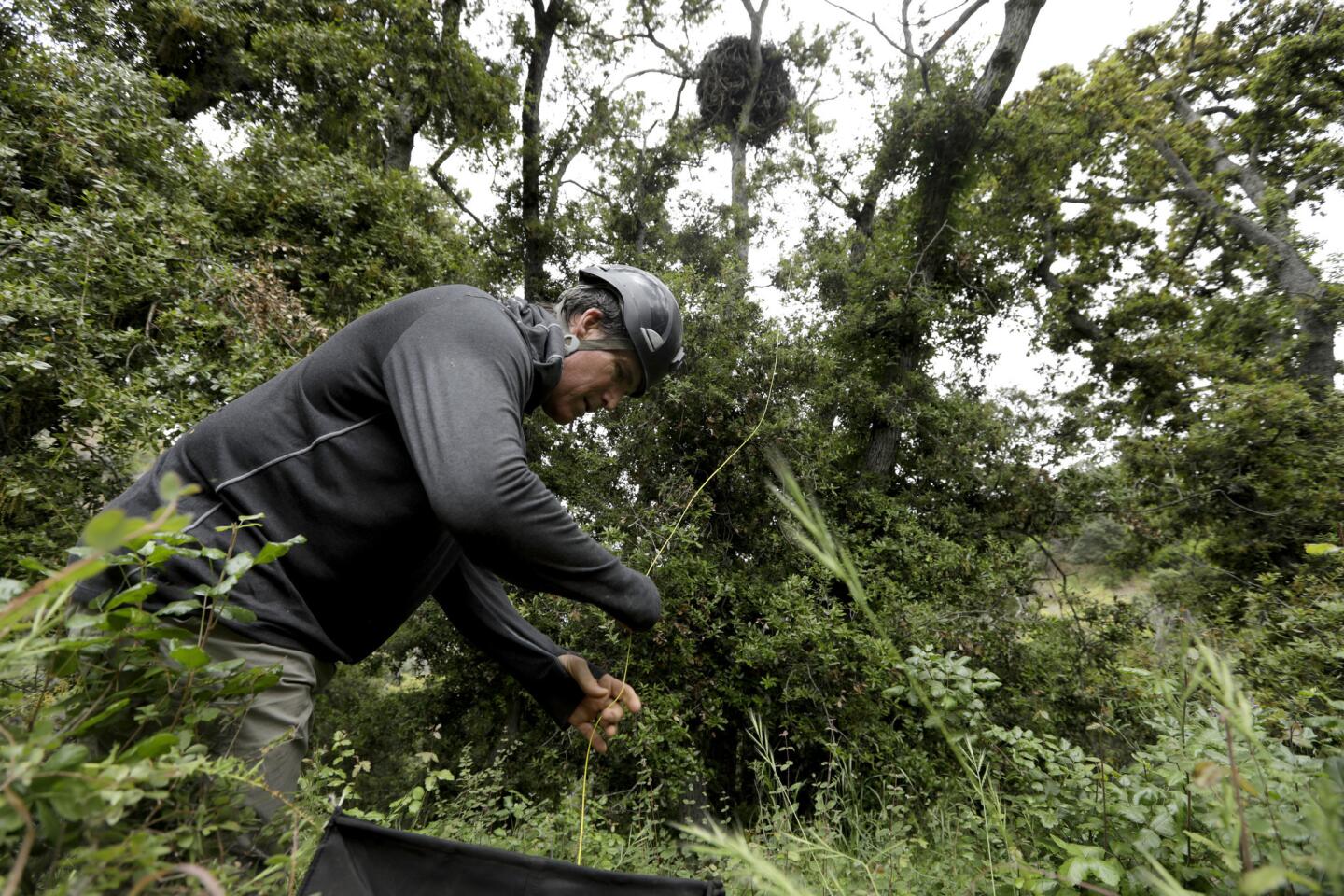Column: A bald eagle chick on Catalina encounters the guy who helped save the species
- Share via
Reporting from Santa Catalina Island — Peter Sharpe, a 53-year-old wildlife biologist who has dedicated his career to reviving the once-endangered bald eagle, stood in front of a tall oak tree in a steep island canyon. His chin tilted up as his eyes scanned the branches.
His legs, shielded by snake chaps, were planted firmly on the steep, poison-oak-covered hillside. He was gauging the distance from the ground to a massive eagle’s nest in the tree, and what it would take to get a line up there.
Over and over, he tossed a rope with a throw bag toward the tree, trying to get it past the crook of a Y-shaped branch near the nest. If he could just get the bag over the crook, he’d be able to anchor a line. Then, he’d be able to use a climbing harness to pull himself up to the nest, 50 feet above the ground.
Inside the nest, a wide-eyed eaglet, 2 months old, looked unsettled each time the throw bag and rope came close. A baby bald eagle is an awkward creature — fierce-looking but too weak to use its wings and unaware that its legs are useful body parts. Mainly, it sits in the nest, waiting for airborne fish deliveries from its parents, both of whom swooped overhead.
Each time Sharpe tossed up the rope and missed, the eaglet tried to open its wings and scoot out of the way. It squeaked in alarm.
“I don’t want to crush the chick,” Sharpe said. “But I have to get this soon because I have a haircut at 4.”
After many tries, Sharpe anchored his line and soon found himself eye to eye with the eaglet, which had puffed out its feathers trying to ward off the intruder.
“How’s it going?” Sharpe asked sweetly.
He scooped up the baby, which tried to bite him, put it inside a gray nylon duffel bag and zipped it shut. The chick’s parents settled on a hillside perch, where they monitored the strange goings-on.
Holding the bag in his lap, Sharpe lowered himself to the ground, where he unzipped the bag and gingerly handed the chick to his technician, Laura Echavez.
Echavez, 24, cradled the awkward little creature in her lap. Its huge yellow feet and black talons looked fierce, but the chick was completely helpless. Covered in black feathers and down, the chick will not get its telltale white head and neck feathers for four or five years.
Sharpe measured it, weighed it and used a pop rivet gun to snap a silver aluminum band on one leg and a red one on the other. The silver band is a federal government permit; the red represents the project, in this case, the Bald Eagle Restoration Project, a collaboration between the Institute for Wildlife Studies and the Catalina Island Conservancy. For identification purposes, this baby will be known henceforth as A12.
Sharpe then put the chick in the bag and hoisted it to the treetop, where he deposited it back in the nest.
“What about how we’ve always been told not to touch baby birds, or their mothers would reject them?” I asked.
“Old wives’ tale,” Sharpe replied. “These birds have a terrible sense of smell.”
The bald eagles are so clueless, he said, that in the early days of the restoration project, which began in 1980, biologists removed fragile eggs from the nest and replaced them with rosin facsimiles.
The eggs were flown to San Francisco, then transferred to incubators at the zoo to hatch. A month or so later, the hatchlings would be placed in the nests.
Parents would be none the wiser.
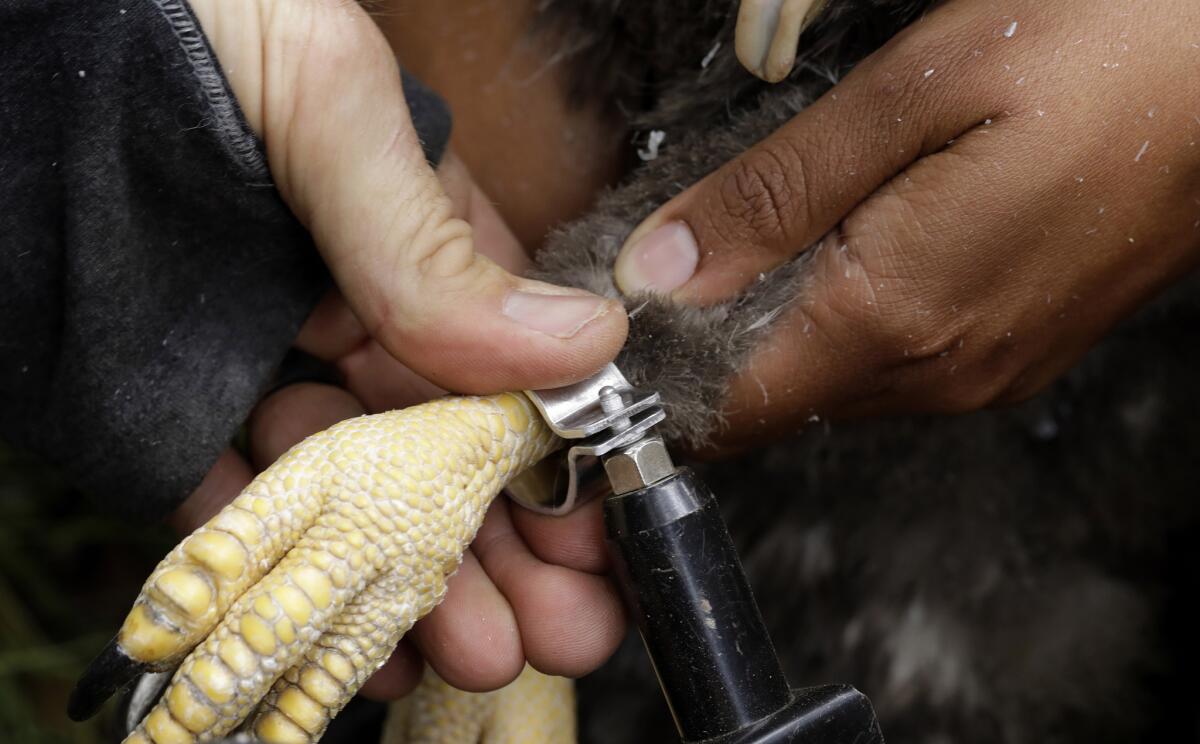
The bald eagle is one of the great American wildlife comeback stories.
The bird was nearly driven to extinction by the unfettered dumping of the pesticide DDT into Santa Monica Bay.
From 1947 to 1970, the Torrance-based Montrose Chemical Corp. drained an estimated 5 million pounds of DDT into the ocean through a sewage pipeline off the Palos Verdes Peninsula.
Birds ate contaminated fish and produced eggs that did not hatch. The shells became porous, allowing critical moisture to evaporate, killing the embryos. The eagles disappeared from Catalina.
In 1972, the federal government banned DDT, in large part because of Rachel Carson and her magnificent “Silent Spring,” the 1962 book that helped pioneer the modern environmental movement.
Now, there are seven nesting pairs of the eagles on Catalina, and at least 20 pairs throughout the Channel Islands. They don’t mate until they turn 5. The oldest are in their early to mid-20s.
Eagle cams at two different aeries help keep track of chicks’ progress and let the public watch something it might never otherwise get to experience.
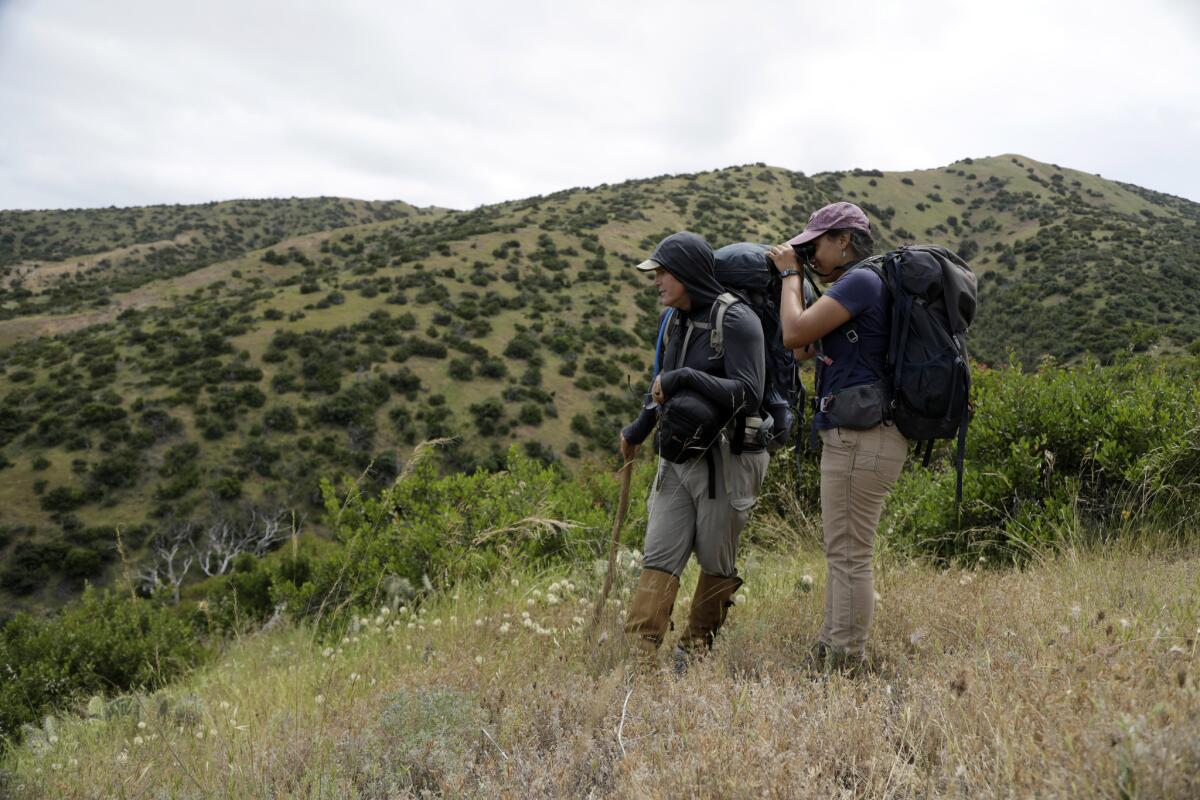
I had more or less invited myself to tag along with Sharpe after hearing about his work from a friend. This is the peak of his two-month banding season, and I wanted to see how he did it.
At noon on Wednesday, he and Echavez picked up Times photographer Katie Falkenberg and me in front of the Catalina Museum on Metropole Street in Avalon. (Bonus: We saw a gray whale surface during the hourlong boat trip from San Pedro.)
We drove into the hills above Avalon, onto conservancy land that is closed to the public, and parked on a high ridge.
Sharpe got his gear together, then led us on a clambering descent. I had assumed there would be a trail. I also had assumed, as a runner, that I’d be able to handle the hike with aplomb. Sharpe made a joke about people who were “mainland fit” as opposed to “Catalina fit.” I am, without a doubt, mainland fit.
We moved past prickly pear cactus, foxtails and all manner of brush with dense branches. Each time I tried to steady myself by grabbing onto one, I discovered the branches were dead, brittle and unable to hold my weight.
After 35 minutes of slipping and sliding (and, yes, falling on my face a couple times), we made it to the tree.
I sat in a field of poison oak, catching my breath, wondering how I’d make it back up the hill, as Sharpe and Echavez went about their work.
When they were done, we hiked to the ridgetop, loaded up and drove back to Avalon.
The next day, Sharpe said, he and Echavez were planning to band eaglets at another nest on the island.
Unlike today’s nest, they said, that one would be hard to reach.
Twitter: @AbcarianLAT
More to Read
Sign up for Essential California
The most important California stories and recommendations in your inbox every morning.
You may occasionally receive promotional content from the Los Angeles Times.
